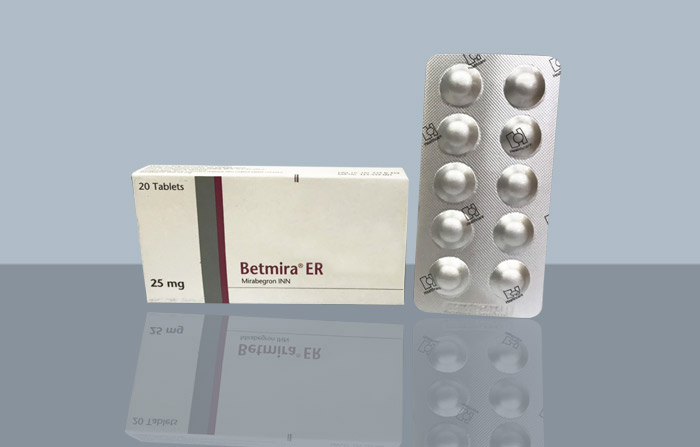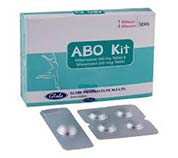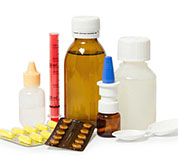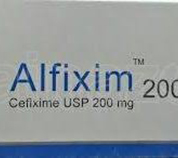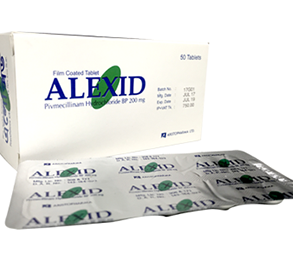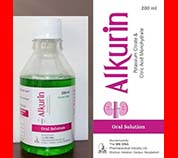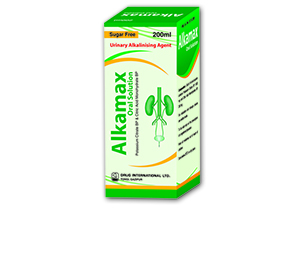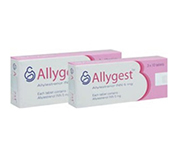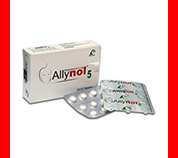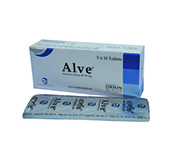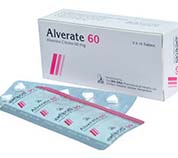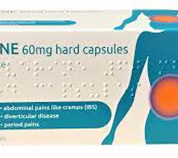Betmira ER 50mg 1 Pcs
Price:
55 ৳
Generic Name:
Type:
Quantity:
Alternative products
Share:
Indications
Mirabegron is a beta-3 adrenergic agonist indicated for the treatment of overactive bladder (OAB) with symptoms of urge urinary incontinence, urgency, and urinary frequency
Mirabegron, in combination with the muscarinic antagonist solifenacin succinate, is indicated for the treatment of OAB with symptoms of urge urinary incontinence, urgency, and urinary frequency
Mirabegron, in combination with the muscarinic antagonist solifenacin succinate, is indicated for the treatment of OAB with symptoms of urge urinary incontinence, urgency, and urinary frequency
* চিকিৎসকের পরামর্শ অনুযায়ী ঔষধ সেবন করুন
Therapeutic Class
BPH/ Urinary retention/ Urinary incontinence
Pharmacology
Mirabegron is a potent and selective beta 3-adrenoceptor agonist. Mirabegron showed relaxation of bladder smooth muscle in rat and human isolated tissue, increased cyclic adenosine monophosphate (cAMP) concentrations in rat bladder tissue and showed a bladder relaxant effect in rat urinary bladder function models. Mirabegron increased mean voided volume per micturition, and decreased the frequency of non-voiding contractions, without affecting voiding pressure or residual urine in rat models of bladder overactivity. In a monkey model, mirabegron showed decreased voiding frequency. These results indicate that mirabegron enhances urine storage function by stimulating beta 3-adrenoceptors in the bladder.
During the urine storage phase, when urine accumulates in the bladder, sympathetic nerve stimulation predominates. Noradrenaline is released from nerve terminals, leading predominantly to beta adrenoceptor activation in the bladder musculature and hence bladder smooth muscle relaxation. During the urine voiding phase, the bladder is predominantly under parasympathetic nervous system control. Acetylcholine, released from pelvic nerve terminals, stimulates cholinergic M2 and M3 receptors, inducing bladder contraction. The activation of the M2 pathway also inhibits beta 3-adrenoceptor induced increases in cAMP. Therefore beta 3-adrenoceptor stimulation should not interfere with the voiding process. This was confirmed in rats with partial urethral obstruction, where mirabegron decreased the frequency of non-voiding contractions without affecting the voided volume per micturition, voiding pressure or residual urine volume.
During the urine storage phase, when urine accumulates in the bladder, sympathetic nerve stimulation predominates. Noradrenaline is released from nerve terminals, leading predominantly to beta adrenoceptor activation in the bladder musculature and hence bladder smooth muscle relaxation. During the urine voiding phase, the bladder is predominantly under parasympathetic nervous system control. Acetylcholine, released from pelvic nerve terminals, stimulates cholinergic M2 and M3 receptors, inducing bladder contraction. The activation of the M2 pathway also inhibits beta 3-adrenoceptor induced increases in cAMP. Therefore beta 3-adrenoceptor stimulation should not interfere with the voiding process. This was confirmed in rats with partial urethral obstruction, where mirabegron decreased the frequency of non-voiding contractions without affecting the voided volume per micturition, voiding pressure or residual urine volume.
Dosage & Administration
Recommended starting dose: 25 mg once daily, alone or in combination with solifenacin succinate 5 mg, once daily. Based on individual efficacy and tolerability, may increase dose to 50 mg once daily, alone or in combination with solifenacin succinate 5 mg, once daily. Swallow whole with water, with or without food, do not chew, divide or crush
Patients with Severe Renal Impairment or Patients with Moderate Hepatic Impairment: Maximum dose is 25 mg Mirabegron once daily
Patients with End Stage Renal Disease (ESRD) or Patients with Severe Hepatic Impairment: Not recommended
Patients with Severe Renal Impairment or Patients with Moderate Hepatic Impairment: Maximum dose is 25 mg Mirabegron once daily
Patients with End Stage Renal Disease (ESRD) or Patients with Severe Hepatic Impairment: Not recommended
* চিকিৎসকের পরামর্শ অনুযায়ী ঔষধ সেবন করুন
Interaction
The effect of co-administered medicinal products on the pharmacokinetics of mirabegron and the effect of mirabegron on the pharmacokinetics of other medicinal products was studied in single- and multiple-dose studies. Most drug-drug interactions were studied using a dose of mirabegron 100 mg given as oral controlled absorption system (OCAS) tablets. Interaction studies of mirabegron with metoprolol and with metformin used mirabegron immediate-release (IR) 160 mg.
Clinically relevant drug interactions between mirabegron and medicinal products that inhibit, induce or are a substrate for one of the CYP isozymes or transporters are not expected, except for the inhibitory effect of mirabegron on the metabolism of CYP2D6 substrates.
Clinically relevant drug interactions between mirabegron and medicinal products that inhibit, induce or are a substrate for one of the CYP isozymes or transporters are not expected, except for the inhibitory effect of mirabegron on the metabolism of CYP2D6 substrates.
Contraindications
Mirabegron is contraindicated in patients with: Hypersensitivity to the active substance or to any of the excipients. Severe uncontrolled hypertension defined as systolic blood pressure ≥180 mmHg and/or diastolic blood pressure ≥110 mmHg.
Side Effects
The most common adverse reactions reported for patients treated with Mirabegron 50 mg during the three 12-week phase 3 double-blind, placebo-controlled studies are tachycardia and urinary tract infections. The frequency of tachycardia was 1.2% in patients receiving Mirabegron 50 mg. Tachycardia led to discontinuation in 0.1% patients receiving Mirabegron 50 mg. The frequency of urinary tract infections was 2.9% in patients receiving Mirabegron 50 mg. Urinary tract infections led to discontinuation in none of the patients receiving Mirabegron 50 mg. Serious adverse reactions included atrial fibrillation (0.2%).
Pregnancy & Lactation
Use in Pregnancy: There are limited amount of data from the use of Mirabegron in pregnant women. Studies in animals have shown reproductive toxicity. Mirabegron is not recommended during pregnancy and in women of childbearing potential not using contraception.
Use in Lactation: Mirabegron is excreted in the milk of rodents and therefore, is predicted to be present in human milk. No studies have been conducted to assess the impact of mirabegron on milk production in humans, its presence in human breast milk, or its effects on the breast-fed child. Mirabegron should not be administered during breast-feeding
Use in Lactation: Mirabegron is excreted in the milk of rodents and therefore, is predicted to be present in human milk. No studies have been conducted to assess the impact of mirabegron on milk production in humans, its presence in human breast milk, or its effects on the breast-fed child. Mirabegron should not be administered during breast-feeding
Overdose Effects
Mirabegron has been administered to healthy volunteers at single doses up to 400 mg. At this dose, adverse events reported included palpitations (1 of 6 subjects) and increased pulse rate exceeding 100 beats per minute (bpm) (3 of 6 subjects). Multiple doses of mirabegron up to 300 mg daily for 10 days showed increases in pulse rate and systolic blood pressure when administered to healthy volunteers. Treatment for overdose should be symptomatic and supportive. In the event of an overdosage, pulse rate, blood pressure and ECG monitoring is recommended.
Use in Special Population
Renal and Hepatic Impairment: Mirabegron has not been studied in patients with end stage renal disease
Gender: No dose adjustment is necessary according to gender.
Children: The safety and efficacy of mirabegron in children below 18 years of age have not yet been established. No data are available.
Gender: No dose adjustment is necessary according to gender.
Children: The safety and efficacy of mirabegron in children below 18 years of age have not yet been established. No data are available.
Storage Conditions
Store in a cool and dry place, protected from light.
- Type Tablet
- Tag
- Morbi leo risus
- Porta ac consectetur ac
- Vestibulum at eros
Related products
Aciphin Injection 1 gm/vial
Aciphin Injection 2 gm/vial
Aciphin Injection 250 mg/vial
Aciphin Injection 500 mg/vial
Afixime Capsule 200 mg
Afixime Capsule 400 mg
Alexid
15 ৳
Alkamax Orl
200 ৳
Allygest Tablet 5 mg
7.72 ৳
Alurol Vet 200gm
1 ৳
Alve
5.01 ৳
Alverin Tablet 60 mg
5.02 ৳
Ancef Capsule 250 mg
6.5 ৳
Ancef Capsule 500 mg
12.5 ৳
Ancipro Tablet 250 mg
8.5 ৳
